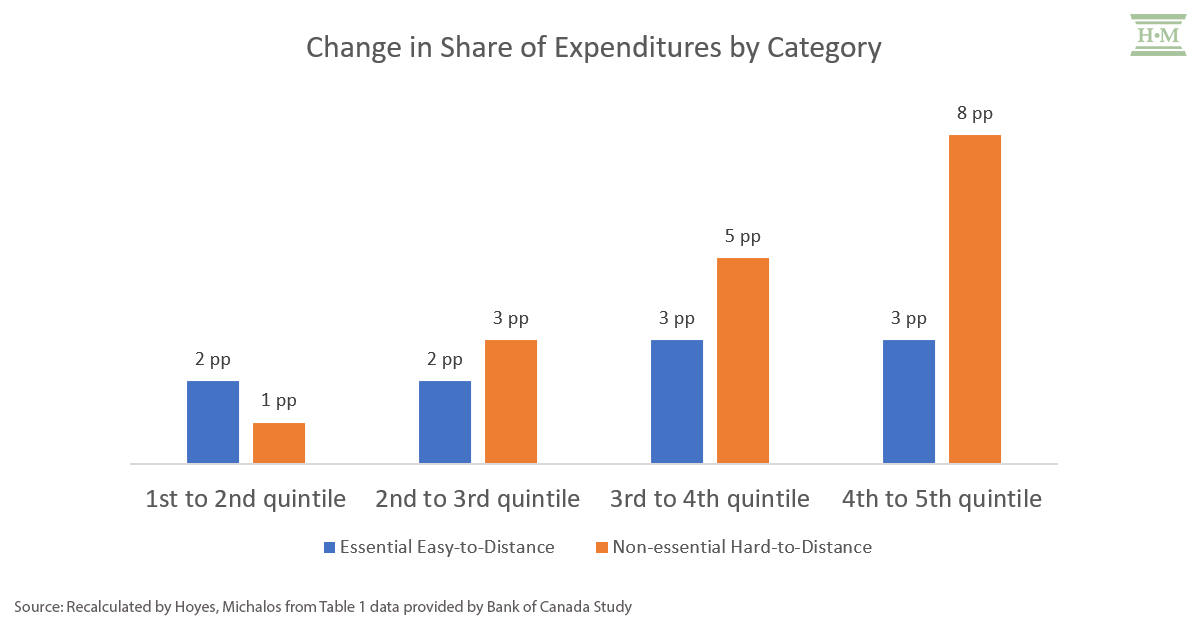
A recent report by the Bank of Canada highlights the potential winners and losers, or as they put it, heterogeneous effects, arising from the economic impact of COVID-19.
The general conclusion is that higher-income earners benefited because they could no longer spend on things like travel and restaurants, low-income earners saw most (if not more) of their income replaced by programs like CERB, while middle-income earners were caught in the middle.
As the report points out, household savings (or borrowing) is a result of budget constraints. Or, as I’ve stated in the past, my clients do not have a debt problem; they have an income problem.
Unemployment peaked at 13.7% in May 2020. By August 2020, more than 16% of Canadians were receiving some form of income replacement (CERB, CESB or EI). For very low-income earners, CERB was beneficial. They may have earned more than they were earning pre-COVID.
However, middle-income earners, who lost their job, saw only a portion of their income replaced. They may or may not have been able to lower expenses enough to compensate for this reduction in income. This created a cash crunch I see all too often, one that leads to more debt.
The Bank of Canada looked at two big budgeting issues – loss of income due to unemployment and shifts in consumption or spending during the pandemic.
For spending, they split goods into two categories based on whether spending would continue:
- items that are either essential or where shopping can be done with social distancing (e.g. groceries or online purchases) and
- non-essential goods or industries hit by closures and social distancing restrictions (e.g. travel and restaurants).
Not surprisingly, higher income earners account for a significantly higher share of spending that was ‘closed for business’ during the pandemic. The result was a higher reduction in spending for high-income earners than middle- and low-income earners. And that means that most of the rise in savings during the pandemic was concentrated in higher-income households as well.
Middle-income households experienced the largest budget squeeze. Some with a deficit were able to balance their budget by deferring debt payments. According to Equifax, more than 3 million consumers deferred at least one payment during the pandemic. Unfortunately, the result will be higher balances and higher debt payments post-pandemic as deferrals end.
The Bank of Canada acknowledges this and looks at the increase in vulnerable borrowers from this additional borrowing. They found that most of the increase in highly indebted households will, you guessed it, be felt by middle-income earners.
As a debt professional, I’m not particularly surprised by this. In fact, the middle-income earner in the Bank of Canada’s study looks a lot like Joe Debtor, our average insolvent debtor, except that the average insolvent debtor has a lot more debt.
| Quintile 2 | Quintile 3 | Joe Debtor | |
| Mean monthly income | $3,222 | $4,757 | $3,600 |
| Mean liquid assets <$1,000 | 27% | 21% | 100% |
| Mean rent | $1,039 | $1,122 | $900 |
| Proportion with auto debt | 20% | 31% | 40% |
| Mean auto debt | $15,982 | $18,910 | $16,000 |
| Proportion with unsecured debt | 45% | 51% | 100% |
| Mean unsecured debt | $11,129 | $13,091 | $34,000 |
Source: Hoyes, Michalos 2019 Bankruptcy Study and Bank of Canada Study Table 2
He pays less in rent because he can’t afford to pay more. His expenditures are already cut back to essential items.
While good, I believe the study presents an overly rosy picture of the outcome for vulnerable households. As we know from Joe Debtor, the truly debt vulnerable have no liquid assets to carry them through any job loss. CERB and deferrals helped, but as the study points out, not enough for many middle-income households.
The study also assumed there would be no second wave, and as we know, we are there with more hard-to-distance workers out of work in the Greater Toronto Area this fall.
What’s also not considered is that CERB was an income replacement but was paid with no tax withholdings. We don’t know yet how many households will face a 15% to 20% tax bill in March. The model concludes that the rise in the debt service ratio was driven by a loss in income and mainly higher mortgage payments after the deferral period ends. More than 8.9 million Canadians collected CERB, almost 1 in 3 Canadians. At nearly $82 billion in benefits paid, that might amount to $10 to $20 billion in taxes owing in March 2021. That’s a lot of debt not taken into account.
While we may not really know how manageable or bad it will be, what we do know is that many, mostly middle income, Canadians will feel the debt impact of COVID-19 for years to come.
Sources:
The Heterogeneous Effects of COVID-19 on Canadian Household Consumption, Debt and Savings: https://www.bankofcanada.ca/2020/11/staff-working-paper-2020-51/
Labour Force Survey, September 2020: https://www150.statcan.gc.ca/n1/daily-quotidien/201009/dq201009a-eng.htm
Equifax Press Release: https://www.consumer.equifax.ca/about-equifax/press-releases/-/blogs/covid-19-has-led-to-an-increased-awareness-of-financial-wellness/
Canada Emergency Response Benefit Statistics: https://www.canada.ca/en/services/benefits/ei/claims-report.html
Hoyes Michalos Bankruptcy Study: https://www.hoyes.com/press/joe-debtor/








